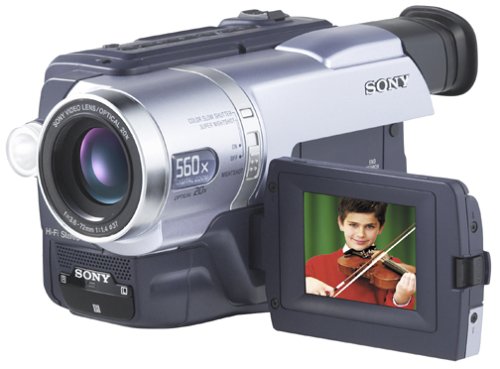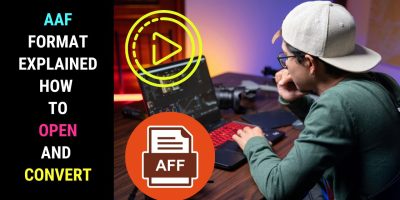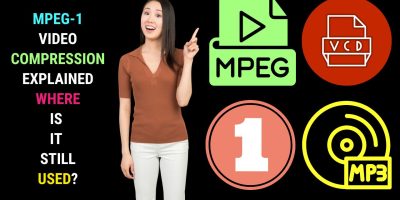Last updated on January 23rd, 2024 at 02:34 am
Updated 16.7.2021
Digital8 (1999 – 2007)
The Digital8 (D8) was a digital camcorder format introduced by Sony in 1999. Two Digital8 models were launched in March of that year, according to a press statement released by Sony on January 7, 1999.
Digital8 is the third and final 8mm video format introduced by Sony.
Before Digital8 was Hi8 and before that was Video8.
Digital8’s Standout Features
Video
Although Digital8 is very similar to DV in its capabilities, there’s a difference when it comes to recording patterns.
With DV each frame is recorded onto 10 tracks. Digital8, on the other hand, requires only five tracks to vertically record two tracks of video data. This makes possible the recording of DV-quality video on a Hi-8 or Video8 tape.
Digital8’s recording system is of the digital component type. This system employs the separate recording of a wide range of luminance (Y component) and color (R-Y/B-Y) signals.
The result is color blur is minimized and picture quality is enhanced.
Sound
Digital8 uses the PCM (Pulse Code Modulation) stereo recording system (16bit/48kHZ) for recording video and 12bit/32kHz for dubbing sound.
Digital8 Camcorder with 8mm and Hi-8 Playback
Digital8 quickly found favor among existing owners of Sony Video8 and Hi-8 camcorders.
A Digital 8 camcorder not only plays Hi-8 tapes but also Video8 tapes. Sony manufactured Digital8 camcorders to be backward compatible with its previous camcorder formats – Hi-8 and Video8.
Both the Video8 and Hi-8 tapes could be used to record DV quality video through a Digital8 video camera.
That doesn’t mean that a 60 -minute Hi-8 tape would get you the same amount of time when the video is recorded in the Digital8 format.
As the drum in the D8 spins faster you would get only 40 minutes of video as the video data is stored in the DV codec. That is if you use PAL tape.
If you use an NTSC tape, you’ll get only half the recording time. A 60-minute Hi-8 tape will fetch you only 30 minutes of recording time.
Note that not all Digital8 camcorder models play back Video8 and Hi-8 tapes. See below for models that don’t support Video8 and Hi-8 playback.
Sony produced the last Digital8 camcorder in 2007.
A decade on, Digital8 camcorders are still sold and bought, online, especially over Amazon. It is sought after by those wishing to digitize their Digital8, Video8 and Hi-8 tapes.
Digital8 Camcorder Models that Can’t Play Back Video8 and Hi-8 Tapes
If you’re shopping for a Digital8 camcorder to convert your 8mm tapes to DVD or a digital video file, be reminded that the following Digital8 camcorder models can only play back Digital8 tapes and not 8mm (Video8) or Hi-8 tapes:
- DCR-TRV130
- DCR-TRV140
- DCR-TRV250
- DCR-TRV260
- DCR-TRV265
- DCR-TRV280
Can You Record in the Video8 or Hi-8 format with a Digital8 Camcorder?
No, you can’t. Although Digital8 camcorders can play back Video8 and Hi-6 tapes, they can only record in the Digital8 format. Digital8 Cassette Tape
Digital8 tapes are available in two forms – metal particle or metal evaporated.
The Digital8 format allows a recording time of up to 135 minutes on a D-90 tape. However, this extra-thin and long tape is not commonly available and is costly.
The tape length used per second is 28mm.
Digital8 Camcorder as a Video Capture Bridge
The Digital8 camcorder acts as a sort of a video capture card that transforms an analog signal into a digital one before sending it to a computer.
This is made possible through a Firewire port in the camcorder. A Firewire port is also called an IEEE 1394 port.
All Digital8 video cameras come with a Firewire port built-in. However, in order to transfer the digital video signal from the camcorder to your computer, your computer or laptop must have a Firewire port built-in.



